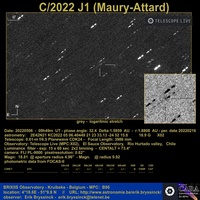COBS News archive
Tycho Tracker: A comperhensive all‐in‐one tool for Comet photometry
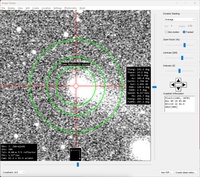
In the latest issue of The Comet's Tail, the British Astronomical Association (BAA) highlights "Tycho Tracker: A Comprehensive All-in-One Tool for Comet Photometry," an article detailing a significant advancement in comet observation technology. Tycho Tracker emerges as a powerful software solution, streamlining the process of comet photometry for both amateur and professional astronomers.
More in recent issue of The Comet's Tale: https://britastro.org/wp-content/uploads/2015/11/tail43.pdf
Good News and bad News about Comet Atlas
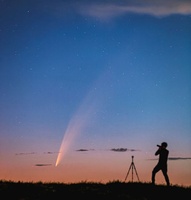
Astrophysicists reveal structure of 74 exocomet belts orbiting nearby stars in landmark survey
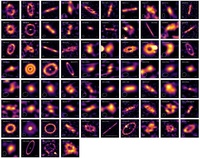
Astrophysicists led by a team from Trinity College Dublin have -- for the first time -- imaged a large number of exocomet belts around nearby stars, and the tiny pebbles within them. The crystal-clear images show light being emitted from these millimetre-sized pebbles within the belts that orbit 74 nearby stars of a wide variety of ages -- from those that are just emerging from birth to those in more mature systems like our own Solar System.
Sungrazing comet at dawn

Philae’s extraordinary comet landing relived
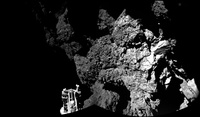
On 12 November 2014, after a ten year journey through the Solar System and over 500 million kilometres from home, Rosetta’s lander Philae made space exploration history by touching down on a comet for the first time. On the occasion of the tenth anniversary of this extraordinary feat, we celebrate Philae’s impressive achievements at Comet 67P/Churyumov-Gerasimenko.
NASA's Webb Reveals Unusual Jets of Volatile Gas from Icy Centaur 29P
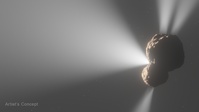
Scientists revealed unexpected outgassing from this object galloping across the outer solar system.
Similar to the Ancient Greek mythological creature of the same name, centaurs in astronomy are in an in-between dynamical phase: leaving their distant and stable orbits beyond Neptune and migrating to the inner solar system, while also entering an active cometary phase. Being stored for billions of years in the freezing confines of the outer solar system, they preserve key insights about the birth of our solar system, which are uniquely revealed as they slowly start to unfreeze in this transient stage.
Using NASA’s James Webb Space Telescope, a team of astronomers observed Centaur 29P/Schwassmann-Wachmann 1, one of the most active and intriguing objects in the outer solar system. The high degree of detail captured by the telescope led to the discovery of new, previously unknown jets of gas, which is helping inform theories about how centaurs and planets are formed.
A big new sungrazing comet
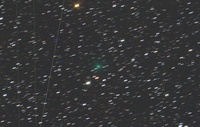
Comet Tsuchinshan-Atlas is heading for Earth
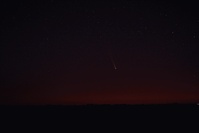
How to spot Comet Tsuchinshan-Atlas
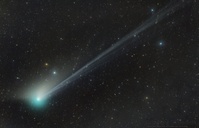
Comet Tsuchinshan-Atlas is a bright comet that’s about to fly around the Sun and pass near Earth. It’s possible to see the comet in the pre-dawn sky right now, and in a couple of weeks, when the comet makes its closest approach to Earth, it may offer an even more impressive sight. Only time will tell for sure.
The origins of dark comets
Is this comet doomed?
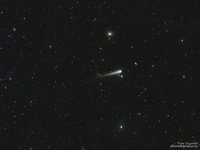
SOHO reaches 5000 comets
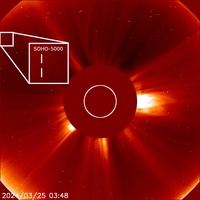
On March 25, 2024, a citizen scientist in the Czech Republic spotted a comet in an image from the Solar and Heliospheric Observatory (SOHO) spacecraft, which has now been confirmed to be the 5,000th comet discovered using SOHO data. SOHO has achieved this milestone over 28 years in space, even though it was never designed to be a comet hunter.
Records of cometary dust hitting the asteroid Ryugu
How to see newly discovered Comet Nishimura
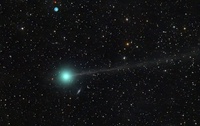
The new comet to look for with the naked eye.
A new comet is visible in the predawn skies as it passes close to Earth on its journey around the Sun. Comet Nishimura is green in color with a long, white tail. It will make its closest pass by Earth on Sept. 12, 2023, and then will carry on toward the Sun.
Asteroid's comet-like tail Is not made of dust, solar observatories reveal
We have known for a while that asteroid 3200 Phaethon acts like a comet. It brightens and forms a tail when it's near the Sun, and it is the source of the annual Geminid meteor shower, even though comets are responsible for most meteor showers. Scientists had blamed Phaethon's comet-like behavior on dust escaping from the asteroid as it's scorched by the Sun. However, a new study using two NASA solar observatories reveals that Phaethon's tail is not dusty at all but is actually made of sodium gas.
New Moravian Instruments Camera type keys
ICQ confirmed new abbreviation keys
Comet impacts formed continents when Solar System entered arms of Milky Way
New Comets C/2022 L1
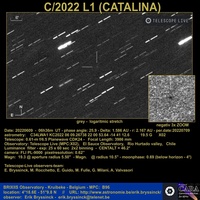
CBET 5134 & MPEC 2022-L97, issued on 2022, June 13, announce that an apparently asteroidal object discovered on June 4 with the 0.68-m Schmidt reflector of the Catalina Sky Survey has been found to show cometary appearance by CCD astrometrists elsewhere after the Minor Planet Center posted it to the PCCP webpage on the basis of a comet-like orbit. The new comet has been designated C/2022 L1 (Catalina).
New Comets C/2022 J1
